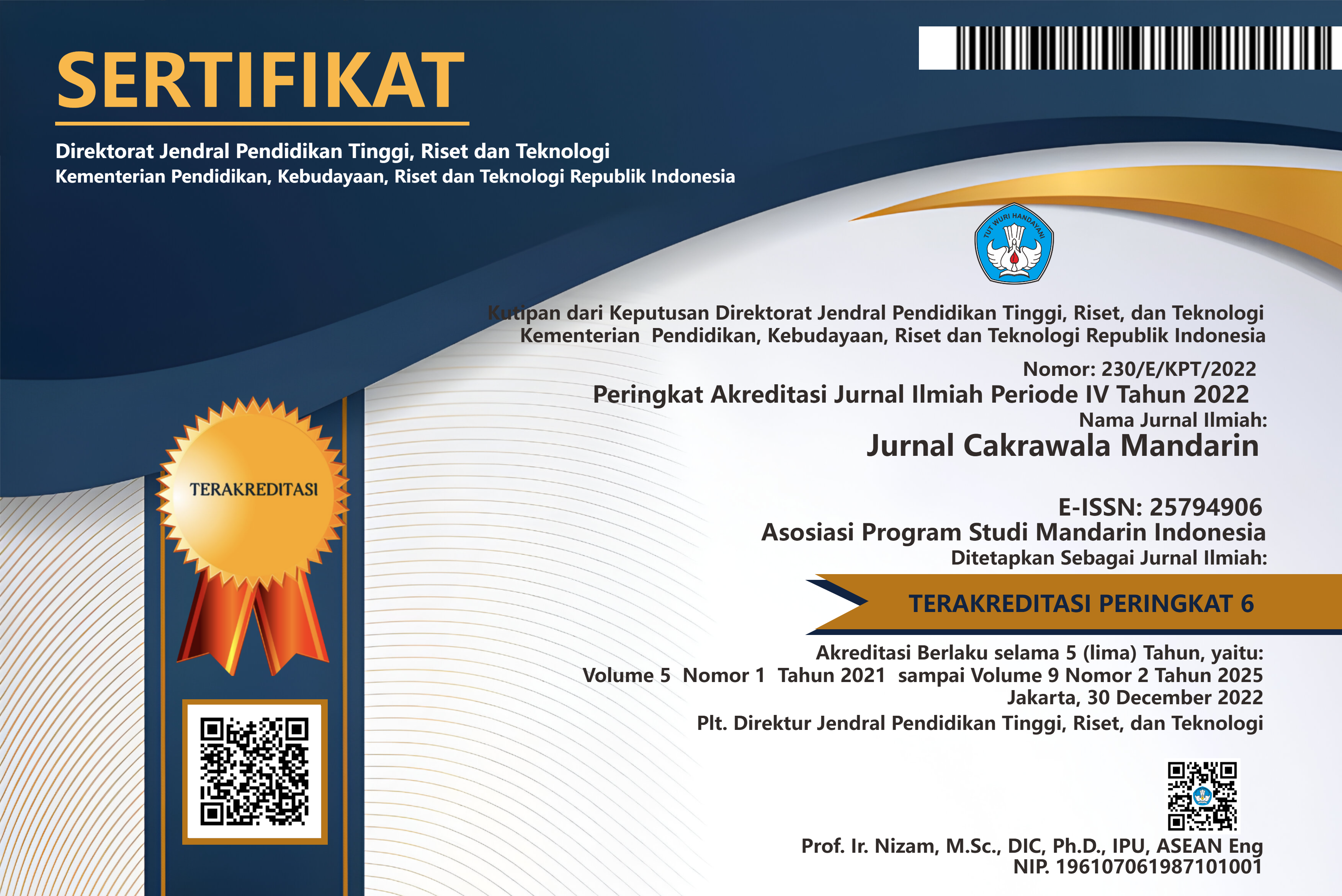PENGARUH BUDAYA TIONGHOA TERHADAP KULINER DI KOTA MEDAN
Abstract
This article was entitled ‘The Influence of Chinese Culture on Culinary in Medan City.’ This study was aimed to analyze the influence of Chinese culture on the culinary in Medan and to analyze the absorption words used in the culinary names. This research used qualitative research method and describe the field data descriptively. The theoretical basis used to analyze the problem is the theoretical basis of acculturation. Data obtained through the results of open interviews, field observations and literature review. The results showed that the process of acculturation of Chinese ethnic food in the community in Medan City was initiated by the interaction that began with trade and communication activities. The acculturation of Chinese ethnic food to Medan's culinary delights can be interpreted from the spices and food names that use some borrowing words from Chinese into Indonesian.
Keywords: chinese culture; acculturation; culinary; absorption words; medan city
Full Text:
PDF (Bahasa Indonesia)References
Berry, Jhon W. (2005). Acculturation : Living successfully in two cultures.International Journal Of Intercultural Relations. 29 (2005) 679-712.
Budiyanto, Ary, Intan Kusuma Wardhani.(2013). Menyantap Soto Melacak Jao To Merekonstruksi (Ulang) Jejak Hibriditas Budaya Kuliner Cina dan Jawa. Surabaya: Institute for Research and Community Service Petra Christian Univesity.
Daulay, U. S. (2012). Sejarah kuliner bangsa Belanda, Cina, India di Kota Medan (Doctoral dissertation, UNIMED).
Devana, F., & Kurniawan, D. (2014). Perancangan Buku Ilustrasi Pengenalan Makna Simbolik dari Kue Tradisional Budaya Tionghoa di Indonesia untuk Remaja Usia 11-12 tahun. Jurnal DKV Adiwarna, 1(4), 12.
ELLA SUSANTI, I. N. D. A. H. (2015). LUMPIA SEMARANG PADA MASA ORDE BARU (Lumpia sebagai Identitas Budaya Etnis Tionghoa Peranakan Semarang). Avatara, 3(3).
Jatmiko, S. W. (2014). Perancangan media interaktif kuliener khas peranakan Tionghoa di Bogor (Doctoral dissertation, Universitas Multimedia Nusantara).
Julina, J., Erwani, I., & Rudiansyah, R. (2020). Philological Studies: Analysis of Chinese Calligraphy at the Tjong A Fie Mansion Museum. Randwick International of Social Science Journal, 1(3), 443-450.
Julina, J., Erwani, I., & Rudiansyah. (2020, December). Philology Studies at the Tjong A Fie Mansion Museum. In Talenta Conference Series: Local Wisdom, Social, and Arts (LWSA) (Vol. 3, No. 4, pp. 83-89).
Moleong, Lexy J.(2007). Metodologi Penelitian Kualitatif. Bandung: PT Remaja Rosdakarya Offset.
Rudiansyah. (2016). Tipologi dan makna simbolis rumah Tjong A Fie. Yogyakarta: Estilisium.
Rahman, F. (2016). Rijsttafel: budaya kuliner di Indonesia masa kolonial 1870-1942. Gramedia Pustaka Utama.
Rudiansyah, Gunardi, G., & Nugrahanto, W. (2019). Unsur Akulturasi Budaya pada Rumah Tjong A Fie di Kota Medan. PANTUN, 2(1).
Rudiansyah. (2020). 张氏兄弟在日里地区建设中参与的角色PERAN SERTA TJONG BERSAUDARA DALAM PEMBANGUNAN TANAH DELI. Jurnal Cakrawala Mandarin, 4(2).
Tanjung, R., Rudiansyah, R., & Chen, J. (2019). LAMA GANG BENGKOK MOSQUE AS A MULTIETHNIC SYMBOL IN THE CITY OF MEDAN. JADECS, 4(2), 95-103.
Utomo, W. P. (2020). PERKEMBANGAN KULINER TIONGHOA DARI RUMAH MAKAN SAMPAI RESTORAN BESAR SEMARANG 1985-1991 (Doctoral dissertation, Universitas Negeri Semarang).
DOI: http://dx.doi.org/10.36279/apsmi.v6i2.110
DOI (PDF (Bahasa Indonesia)): http://dx.doi.org/10.36279/apsmi.v6i2.110.g129
Refbacks
- There are currently no refbacks.
Alamat Redaksi: Tlp. +62778473399 - hermanuvers72@gmail.com E-ISSN 2579-4906 |  |




